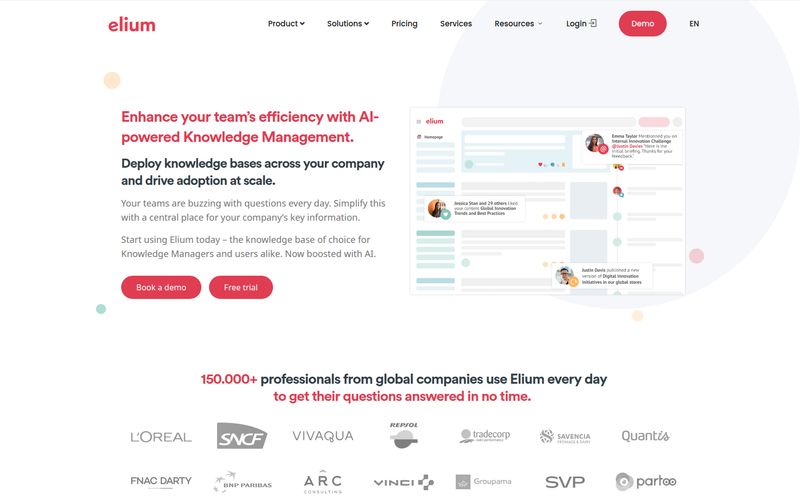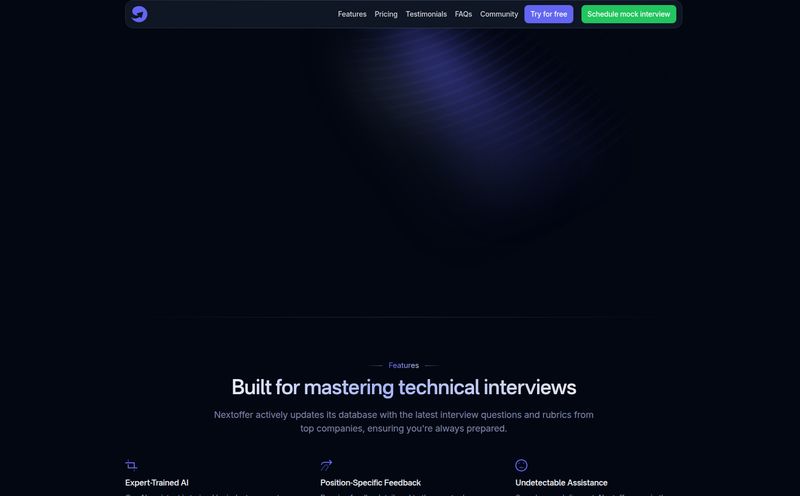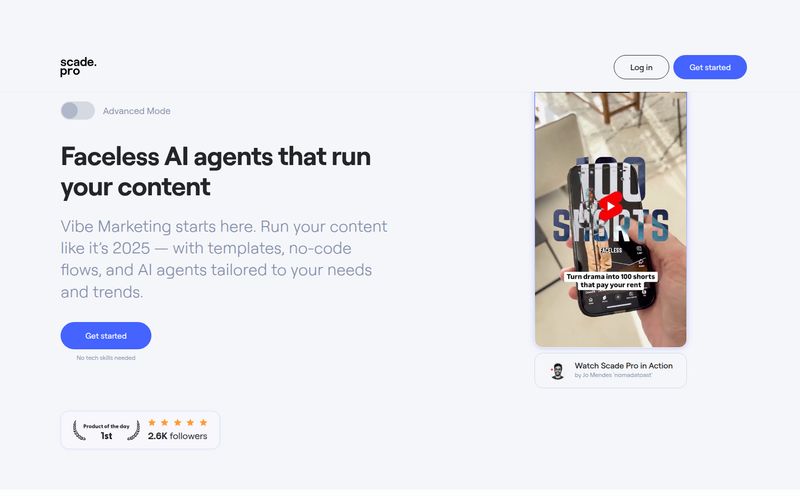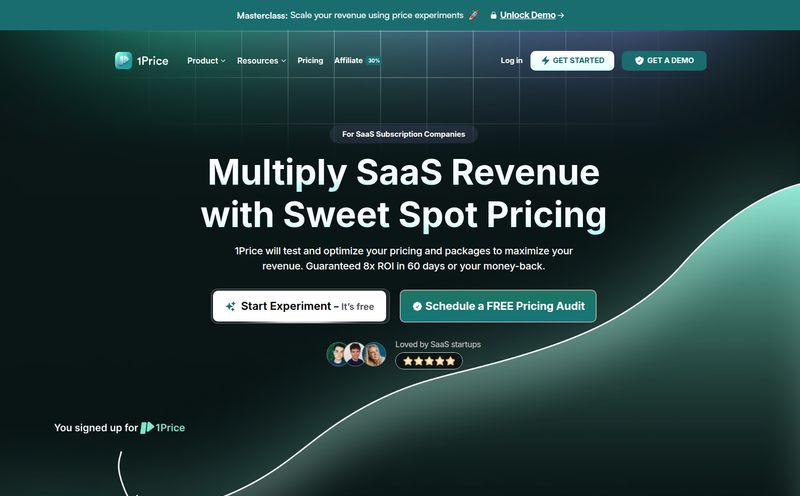We’ve all been there. That sinking feeling when an email with the subject line "Re: Re: Fwd: Video Draft v17_final_FINAL_for_review" lands in your inbox. You open it to find a dozen conflicting notes, timecodes that are slightly off, and feedback like, "can we make it pop more?" somewhere around the 23-second mark. It's a special kind of professional purgatory that drains creativity and inflates timelines. For years, this was just the cost of doing business in animation, VFX, and game development.
I've lost more hours than I care to admit trying to decipher these kinds of notes, toggling between my email, a spreadsheet, and my editing software. It’s like trying to assemble IKEA furniture using instructions written by three different people who all speak different languages. It’s inefficient, frustrating, and honestly, a bit soul-crushing.
Then a little platform called SyncSketch started making waves. It promised a better way. A unified space for visual feedback. So, being the jaded-but-hopeful SEO and workflow geek that I am, I had to see if it lived up to the hype. Is this the tool that finally lets us escape feedback hell? Let’s get into it.
So, What is SyncSketch Anyway?
At its core, SyncSketch is a cloud-based platform for visual collaboration. But that’s a very corporate-sounding way of putting it. Think of it less like a piece of software and more like a shared virtual light-table or review room. It's a place where everyone on a project—from the director in Los Angeles to the animator in Lisbon—can watch the same piece of media, at the exact same time, and draw directly on the frames to give notes.
It’s built for artists, by people who clearly understand the pain points of creative production. This isn't just a video hosting site with a comment box. It’s a purpose-built environment for giving and receiving precise, actionable feedback on visual media. That includes 2D animation, video, images, and even 3D models.
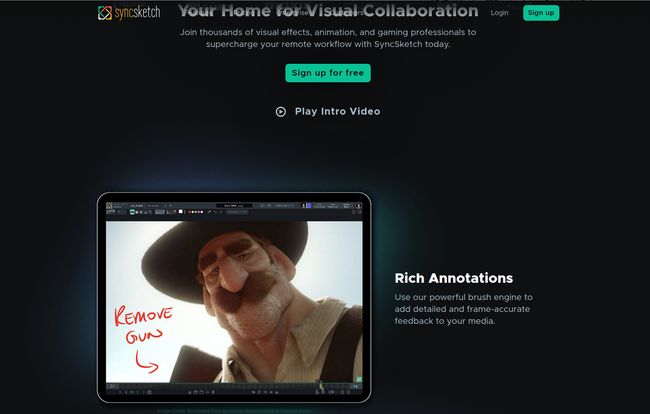
Visit SyncSketch
The Features That Genuinely Make a Difference
A feature list is just a list until you see how it actually impacts your day-to-day. A few of SyncSketch's tools are what I’d call true game-changers for any creative team.
Synchronized Playback and Live Annotations
This is the absolute killer feature. The heart of SyncSketch. You can host a live review session where everyone's playhead is perfectly synchronized. When the director pauses on frame 347, everyone pauses on frame 347. No more, "Wait, are you looking at the part where the robot explodes or right after?"
Then comes the magic. The director (or anyone in the session) can grab a virtual pencil and circle the exact part of teh robot's leg that needs a different texture. They can write "Add more debris here!" right on the screen. It’s immediate, it's visual, and it’s completely unambiguous. This single feature transforms a messy, hour-long meeting into a focused, 15-minute review. It's the difference between a fuzzy phone call and a crystal-clear video conference.
Diving into 3D Model Reviews
For my friends in game development and VFX, this is huge. Reviewing 3D models has traditionally been a clunky process. You're either sending massive files back and forth or trying to give notes over a laggy screen-share from Maya or Blender. SyncSketch lets you upload 3D models directly into the browser. You can tumble, zoom, and pan around the model, inspect textures and UVs, and leave notes on specific parts of the geometry. It dramatically lowers the barrier to getting quick feedback from art directors or clients who might not have the high-end software (or the knowledge) to open the source file themselves.
Integration That Actually Connects Your Workflow
"Integration" can be an empty buzzword, but here it's a massive time-saver. SyncSketch plays nicely with the big project management tools of the creative world, like Jira and Autodesk's ShotGrid. This means the notes you make during a review session don't just live in SyncSketch. They can be pushed directly into your production pipeline, creating tasks for artists with all the visual context attached. This closes the loop between feedback and action, preventing things from falling through the cracks. No more manually copying notes into a task manager. Thank goodness.
Let's Talk About The Price Tag
Alright, this is where things get real for many of us. A great tool is only great if you can afford it. SyncSketch uses a per-user, per-month subscription model, which is pretty standard for SaaS platforms. Here’s a quick breakdown of their main tiers:
| Plan | Price (per user/month, billed yearly) | Who It's For |
|---|---|---|
| Light | Free | A quick look-see. Very limited (1 user, 1GB storage). |
| Indie | $9 | Solo freelancers or very small teams. |
| Team | $19 | The sweet spot for most small-to-mid-sized studios. |
| Enterprise | $36 | Large studios needing top-tier security, SSO, and API access. |
So, is it expensive? Well, that depends on your perspective. For a solo artist just starting out, $9/month might be another bill to worry about. But for a studio of 10 people on the Team plan, you're looking at around $190 a month. Some might balk at that, but I'd argue you need to weigh it against the cost of inefficiency. How much is an hour of your lead animator's time worth? Or your director's? If SyncSketch saves even a few hours of wasted time per month across the team—which in my experience, it easily does—it pays for itself almost immediately.
The Good, The Bad, and My Honest Opinion
No tool is perfect, and it's important to see both sides. After spending some serious time with it, here's my take.
What I Absolutely Love
The real-time collaboration is just chef's kiss. It's smooth, intuitive, and solves the single biggest problem in remote creative work. The annotation tools are robust and clearly designed for artists, not project managers. And the ability to quickly compare different versions of a shot side-by-side is a simple but brilliant addition. It's a platform that respects the creative process.
What Could Be Better
The pricing, while justifiable, can still be a barrier for smaller studios or those in regions with less favorable exchange rates. The biggest drawback, inherent to any cloud platform, is its reliance on a stable internet connection. If you're working from a location with spotty Wi-Fi, the real-time features can suffer. Also, some of the really powerful stuff, like advanced security settings and API access, are locked behind the pricier Enterprise plan, which is understandable but still a consideration.
So, Who Is This For, Really?
SyncSketch isn't for everyone. If you're a YouTuber who just needs to send a final cut to a friend for a quick thumbs-up, this is overkill. But if you are part of a team that lives and breathes by visual feedback, this is for you.
It’s built for:
- Animation Studios: From 2D character animation to 3D features.
- VFX Houses: Reviewing complex shots, particle effects, and compositing.
- Game Development Teams: For reviewing models, environments, and animation cycles.
- Advertising Agencies: Getting quick, clear client feedback on storyboards and commercials.
- Art and Design Schools: A fantastic tool for instructors to critique student work remotely.
Essentially, if your review process involves phrases like "on frame 1245" or "the curve of that shoulder," SyncSketch should be on your radar.
Frequently Asked Questions
How secure is my project's intellectual property on SyncSketch?
They take security pretty seriously. All data is encrypted, and they work with major studios like Netflix and Psyop, so their security is vetted at a high level. The Enterprise plan offers even more granular controls, like single sign-on (SSO) and private cloud options for maximum protection of your valuable IP.
Can I use SyncSketch for things other than video?
Absolutely. It supports high-resolution images, PDFs (great for storyboards), and as mentioned, full 3D models. It's a comprehensive visual review tool, not just a video player.
Is there a free version I can try?
Yes, there's a 'Light' plan which is free. It's limited to one user and 1GB of storage, so it's more for dipping your toes in the water than for running a full project, but it's perfect for seeing if the basic workflow feels right for you.
How does it compare to something like Frame.io?
That's a common question. Frame.io is another fantastic tool, but it's generally more focused on the live-action video production and post-production pipeline. SyncSketch has a stronger emphasis on frame-by-frame drawing and animation-specific workflows, especially with its 3D model viewer. They're both great, but they serve slightly different niches within the broader world of video collaboration.
Does it work well on a tablet?
Yes, and it's a fantastic experience. Using an Apple Pencil or another stylus to draw notes directly on an iPad feels incredibly natural. It's one of the best ways to use the platform, in my opinion.
The Final Verdict: Is SyncSketch a Sanity-Saver?
After all this, do I think SyncSketch is worth it? For the right team, one hundred percent yes. It’s not just another subscription to add to the pile; it’s an investment in a smoother, faster, and less frustrating creative process. It eliminates ambiguity and replaces endless email chains with clarity and efficiency.
It brings back a sense of direct, hands-on collaboration that has often been lost in the shift to remote work. For any creative team tired of fighting their own review process, SyncSketch isn't just a helpful tool—it’s a lifeline.
Reference and Sources
- SyncSketch Official Website
- SyncSketch Pricing Page
- Jira Project Management
- Autodesk ShotGrid
- Frame.io
